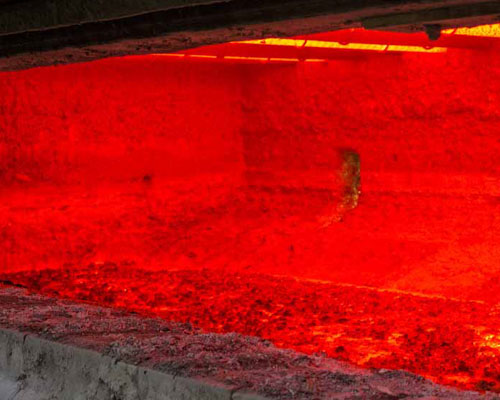Purification mechanism of aluminum melt: use the difference between the hydrogen partial pressure in the high-purity inert gas and the hydrogen partial pressure in the aluminum liquid. Through diffusion, the hydrogen atoms diffuse into the inert gas bubbles to form hydrogen molecules, and follow the bubbles The rise brings out the molten aluminum to achieve the purpose of removing hydrogen. During the ascending process of the inert gas bubble, through the principle of tension adsorption, it can also adsorb some small particles of non-metallic inclusions to achieve the purpose of impurity removal.
The efficiency of inert gas degassing and slagging is positively related to the contact area between bubbles and molten aluminum. The larger the contact surface, the better the degassing and slagging effect. Under the condition of equal volume of gas, the smaller the bubble, the better the degassing effect.
The mixed gas purification mechanism on aluminum melt is to add a certain amount of chlorine to the inert gas to improve the purification efficiency. The chlorine itself is insoluble in aluminum alloy melt, but it can chemically react with excess aluminum liquid to generate AlCl3 gas. During the floating process, the same as the mechanism of inert gas removal, it can achieve the effect of gas removal and slag removal. AlCl3 also has a good slag effect. Another role of chlorine refining is to remove alkali metals and alkaline earth metals. For aluminum-magnesium-silicon wire rods, it is not recommended to use it, even if it is necessary to use a chlorine mixed gas for refining, the chlorine content in the mixed gas should not exceed 1%.

The refining agent purification method uses the chloride or fluoride gas generated by the compound in the refining agent at high temperature, such as hexachloroethane, sodium chloride, potassium chloride and other high-temperature decomposition of chlorine, sodium fluorosilicate generated at high temperature Silicon tetrafluoride, etc., can achieve degassing and slag removal during the floating process. At the same time, the compounds in the refining agent and the oxidized inclusions in the melt can be adsorbed or dissolved. The cryolite in the refining agent can dissolve alumina to achieve aluminum slag separation.

